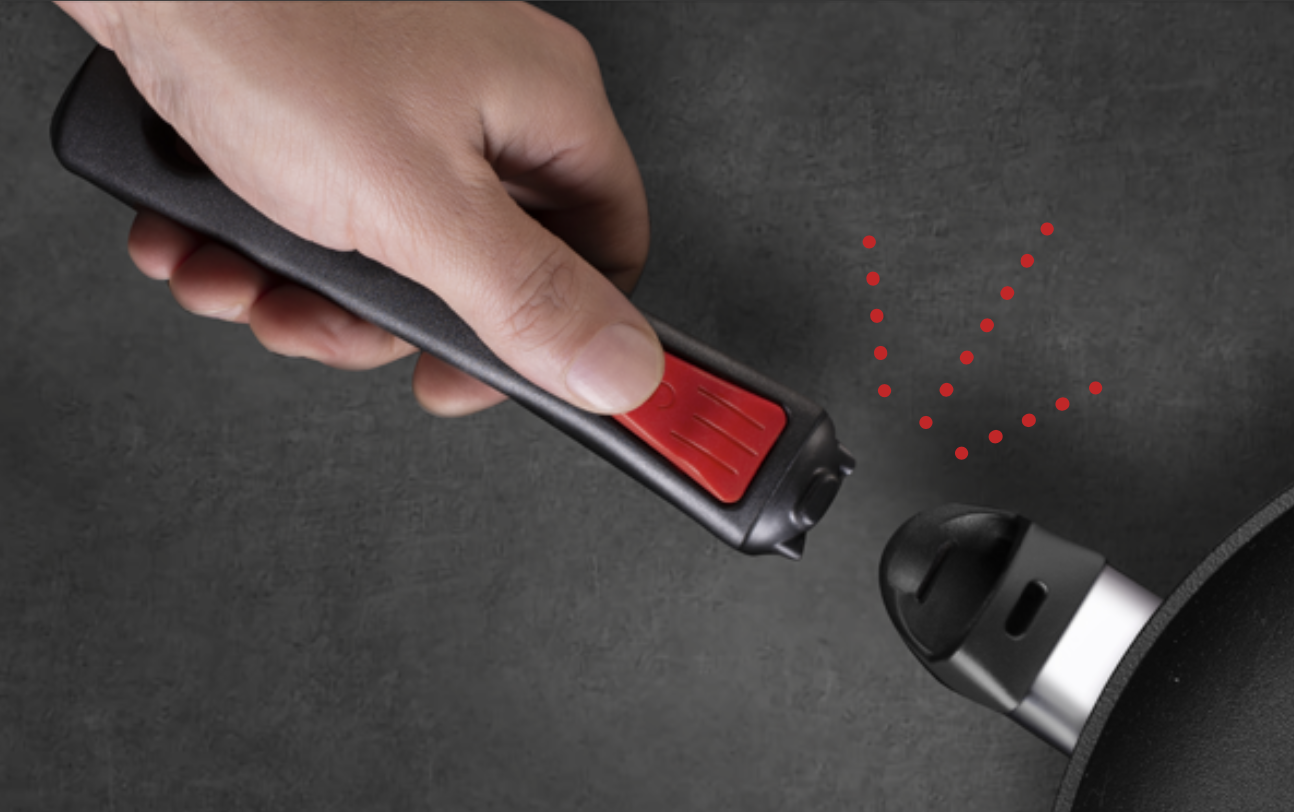In the competitive cookware market, the handle is more than just a functional detail—it’s the consumer’s primary touchpoint with your product, and therefore a critical part of your brand’s identity. Every time a customer uses your cookware, the handle is the element they hold, feel, and interact with. This makes it a key differentiator when developing a Unique Selling Point (USP).
Post-pandemic market dynamics have amplified consumer expectations around hygiene, safety, ergonomics, and sustainability. The handle is no longer simply a means to lift and move cookware; it can enhance comfort, prevent bacterial spread, express sustainability commitments, and communicate your brand’s design DNA.
At F.B.M., innovations such as F.B.M. Active Shield antibacterial technology and our Ecosystem recycled and bio-based solutions show how a handle can embody both technological excellence and lifestyle-driven values.
As cookware designers and manufacturers, our challenge is clear: make the handle a central element of the product’s identity and communicate its value to the market.

COMMUNICATING THE VALUE OF THE HANDLE
It’s very important to be able to communicate information about the cookware you want to sell to the potential user, also through the cookware handles. This is a way to make a particular product line appeal to consumers and to differentiate it from other options by creating a new selling point.
There are some simple ways to proceed toward this goal, such as:
-
Include a Description about the Accessory in your Product.
This description will focus on making the cookware accessory appealing to the consumer from an ergonomic standpoint. This is your opportunity to point out to the consumer how the cookware handle for example can improve the experience of cooking by making the pots and pans easy to grip, convenient to use and flexible enough to let them be versatile. -
Highlight the Unique Selling Point.
Include descriptive text sharing the handle’s distinct features that set it apart from similar styles. Close-up images highlighting these particularities (eg. a ladle rest) can be used to make a major impact, since the customer isn’t left wondering about anything that may be unclear from the text.
-
Material choice is now also a decisive factor for many consumers.
Highlighting the use of recycled or bio-based materials, and backing those claims with independent validation such as UL Environmental Claim Validation, builds trust and communicates a strong sustainability commitment. Linking these material choices to durability reinforces the idea that an eco-friendly product can also be a long-lasting one.
This can be accomplished by mentioning the features up to the creation of the adhesive tags to be placed directly on the product.
-
Add References to Successful Certifications and Tests.
Cookware isn’t the type of household item that consumers replace often. For this reason, it’s a purchase that requires some planning and thought before making a final choice.
Safety and hygiene are closely connected to consumer trust. Handles that integrate antibacterial technologies like Active Shield, that resist heat transfer to protect hands, or that feature easy-clean surfaces can be powerful selling points. Here, certifications matter. Displaying the F.B.M. Quality Certified mark (see the quality certified logo developed by F.B.M.), referencing UL validation, and highlighting compliance with both EN 12983-1/2 European standards and US CBA standards for cookware handles provide consumers with reassurance about safety and reliability.
(see the quality certified logo developed by F.B.M.), referencing UL validation, and highlighting compliance with both EN 12983-1/2 European standards and US CBA standards for cookware handles provide consumers with reassurance about safety and reliability.
At F.B.M., we complement these with our own rigorous in-house testing for mechanical resistance, thermal performance, locking mechanisms, and long-term durability—going beyond what regulations require to guarantee real-world performance.
As a buyer, you can request proof of any tests that have been performed on the product before making your decision. You will also want to inquire whether the company holds any type of handle’ patent as part of your decision-making process. -
Communicating brand differentiation is equally important.
Customizable design options—from colors to logo placement to flame guard shapes—can make a cookware handle a recognizable signature for a brand. Even color strategy plays a role: earthy green and brown tones can reinforce an eco-friendly identity, while clean blue and white palettes can convey hygiene and freshness. Aligning handle colors with the body of the cookware and even the packaging helps create a cohesive, premium look that stands out on shelves and in digital marketing.
FROM DETAIL TO BRAND SIGNATURE
In modern cookware marketing, the handle is a strategic branding opportunity. It’s the point where ergonomics meets aesthetics, technology meets sustainability, and design meets the user’s daily routine. When effectively communicated, the handle’s features can transform it from a simple functional part into a brand-defining signature.
By determining which elements of the handle stand out, drawing the consumer’s attention to these features is a much easier task and moving product becomes a natural outcome.
At F.B.M., we help brands create handles that speak their language—through design, technology, and sustainability.
If you want to discover how to transform your cookware handles into powerful selling points that connect with today’s consumers, contact us today.




